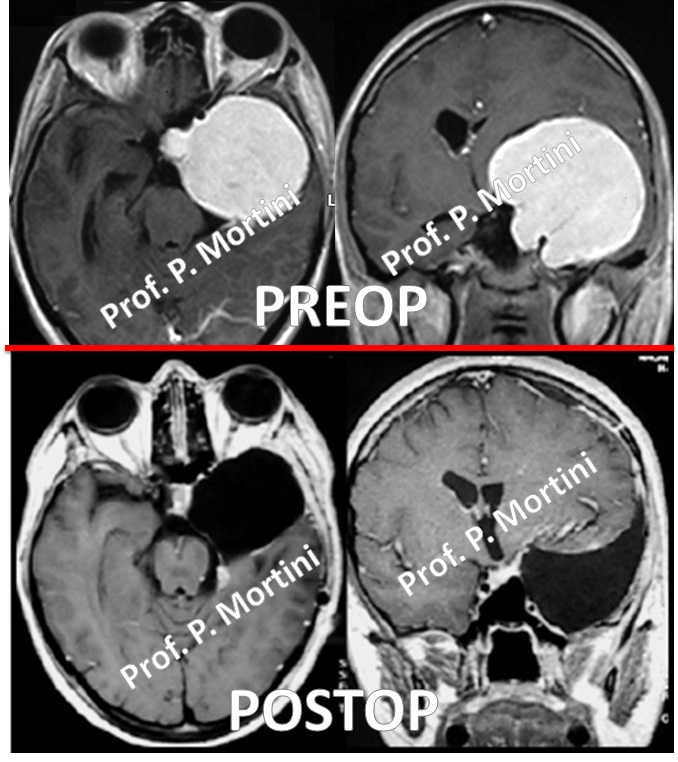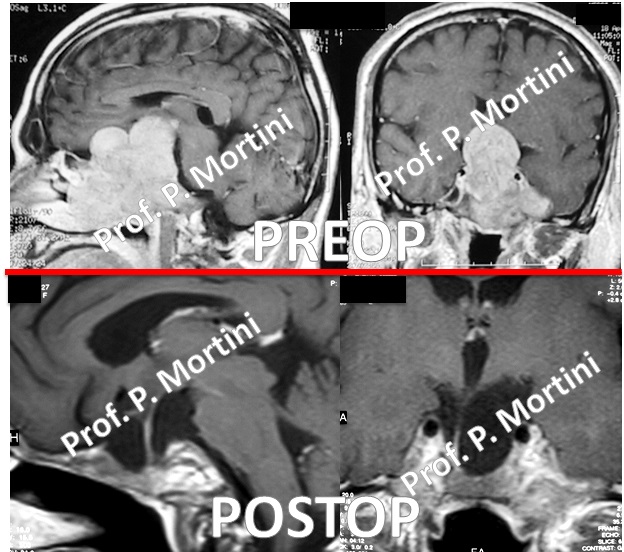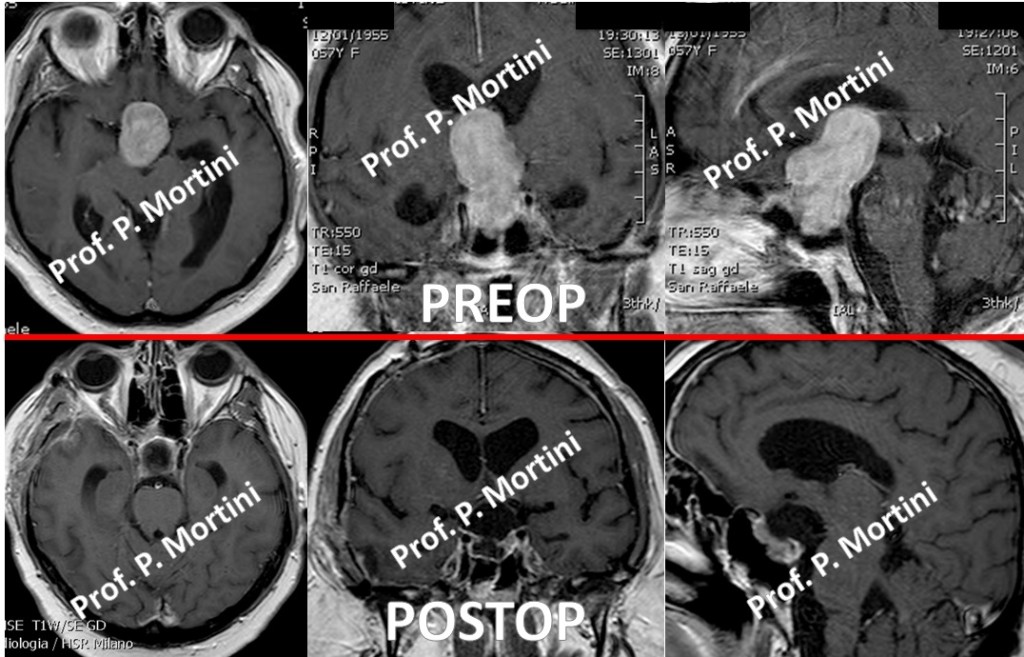The pituitary gland sits in a bony compartment (called the sella turcica) at the base of the skull and secretes substances, such as:
- growth hormone
- prolactin
- adrenocorticotropin hormone
which serve a variety of essential hormonal and metabolic functions.
Tumors of the pituitary gland are
- adenomas
benign tumors made of glandular epithelial cells, the cells that cover the surface of the gland. Adenomas, relatively common tumors that usually are benign and slow-growing, may destroy hormone-producing cells or secrete hormones themselves.
Other tumors that appear in this area, called the sellar/parasellar region, include
- craniopharyngiomas
- germ cell tumors
- epidermoid cysts, which are tumors that arise from developmental cells
- meningiomas, tumors of the protective covering of the brain
- gliomas, tumors that arise from the supporting cells in the brain
- metastatic tumors that originate in another part of the body and spread to the brain.
Symptoms
Many pituitary tumors remain small and do not cause significant symptoms.
Symptoms that arise are caused by two mechanisms:
- hormonal changes caused by the tumor
- the growth of the tumor
Pituitary tumors may damage healthy hormone-producing cells, causing a lack of certain hormones and symptoms including
- fatigue
- weakness
- growth problems
- disruption of sexual processes
Tumors that produce hormones, known as functioning tumors, often cause symptoms when they are very small (less than 1 cm in diameter).
An excess of hormones can cause a wide range of effects that depend on the hormone, such as
- infertility
- abnormal growth
- high blood pressure
- unusual changes in the skin and body
- specific growth disorders
Larger pituitary tumors (greater than 1 cm) usually are not hormonally active. These nonfunctioning adenomas may protrude outside of the sella turcica and cause symptoms by compressing the surrounding structures.
Nonfunctioning adenomas may cause
- headaches
- nausea
- vomiting
and, when they push against the optic chiasm, visual deficits.
Diagnosis
As with most brain tumors, imaging studies are essential in the diagnosis of pituitary and parasellar tumors. Imaging techniques for these tumors include Magnetic Resonance Imaging (MRI) and Computed Tomography (CT) scans, which can be enhanced with the intravenous administration of a contrast agent that distinguishes the tumor from normal tissue.
Treatment
Treatment for a pituitary tumor depends on its hormonal activity and whether it affects surrounding tissue.
Both functional and nonfunctional tumors may be treated with surgery sometimes followed by radiation therapy.
In addition, drug therapy has shown some effectiveness in certain functional adenomas.
Because of their location, these tumors often can be difficult to reach surgically.
The development of a particular surgical approach, known as transsphenoidal hypophysectomy, has made surgical treatment of pituitary adenomas safer and more effective.
In addition, some smaller pituitary tumors may be treated effectively with Stereotactic Radiosurgery, which involves the use of a highly focused beam of radiation to target the tumor cells specifically and leave the surrounding brain unaffected.
 English
English Italiano
Italiano



